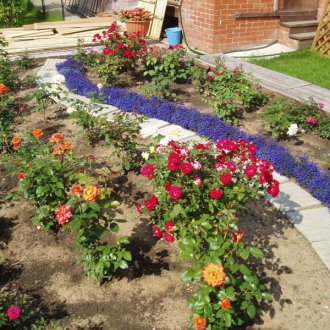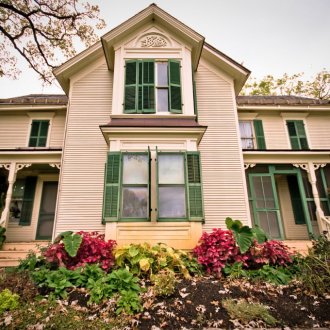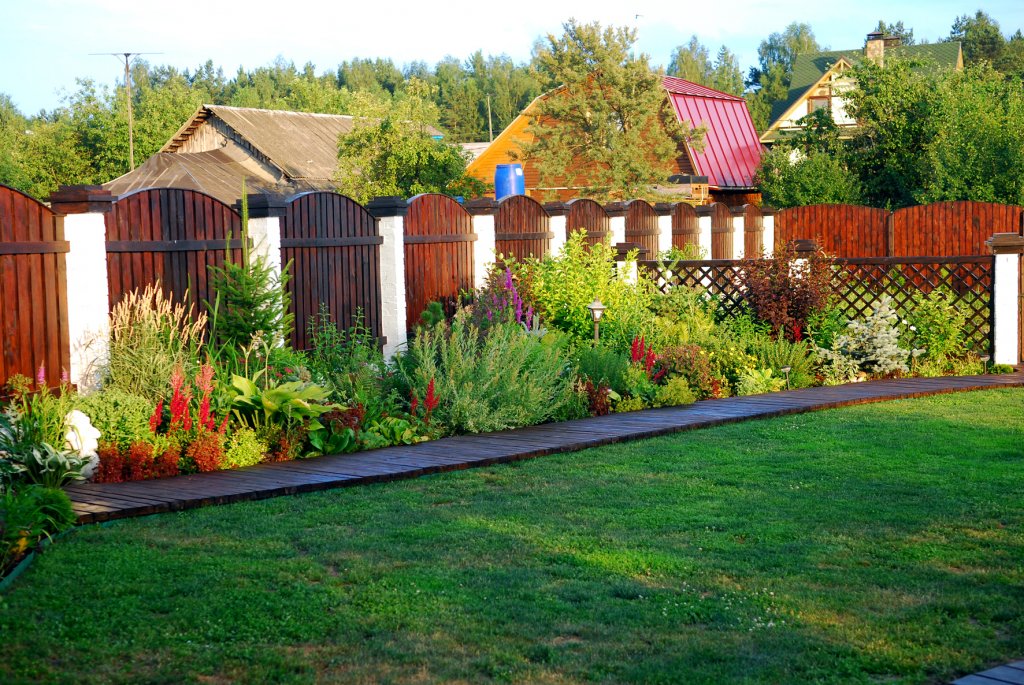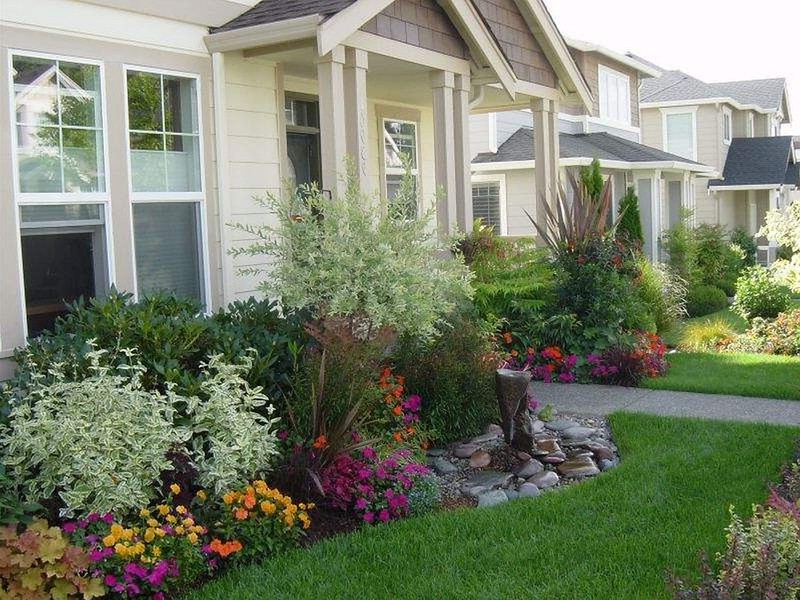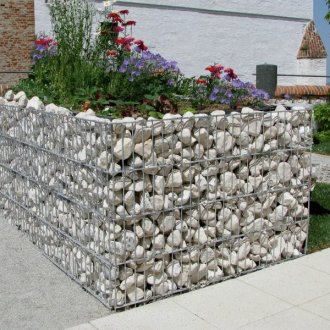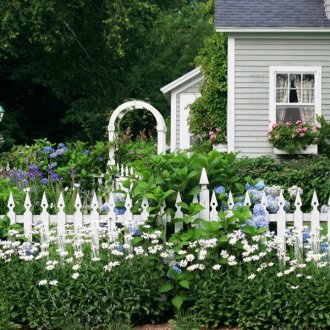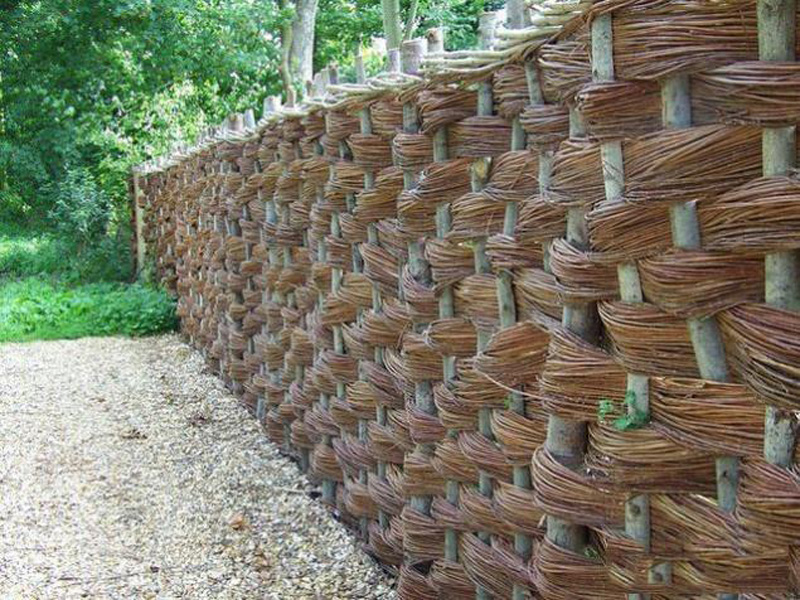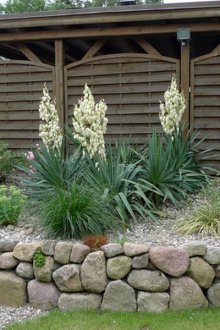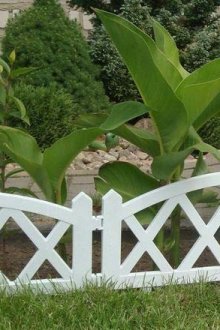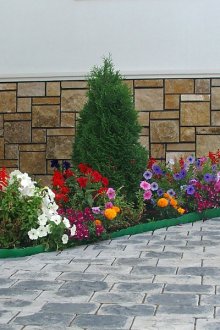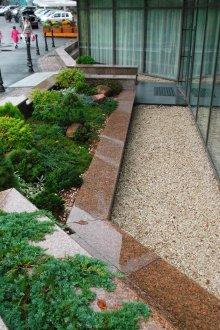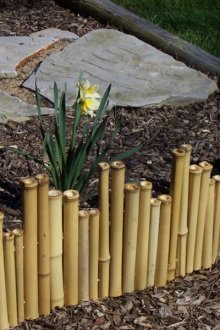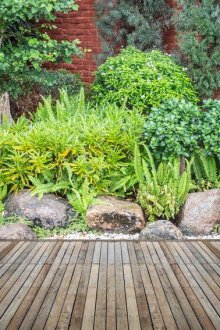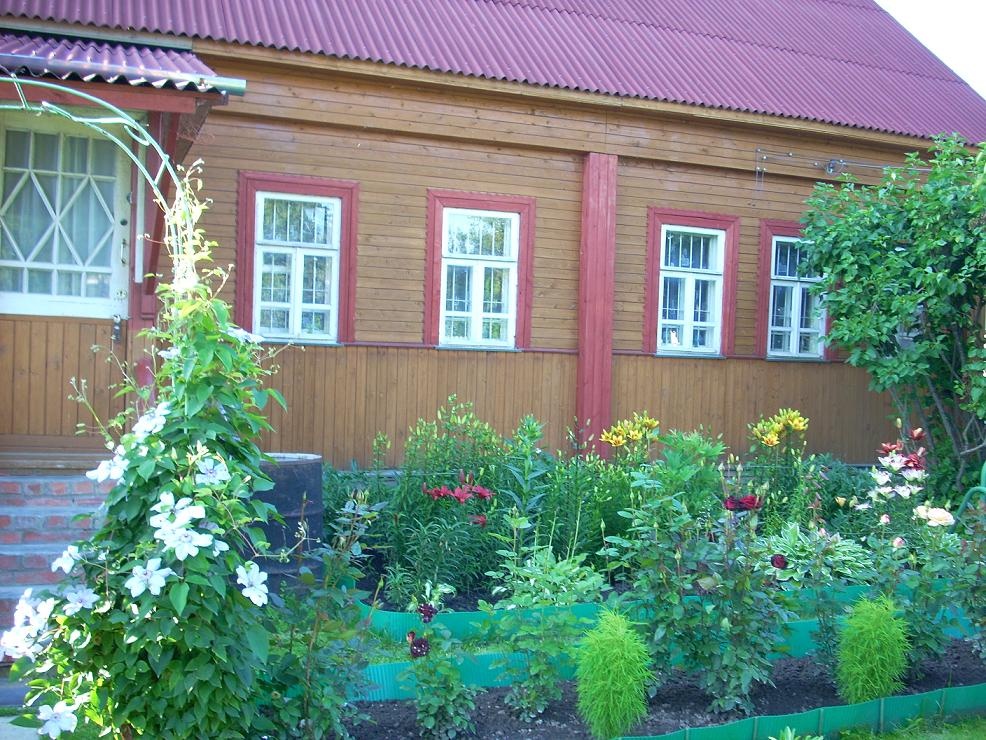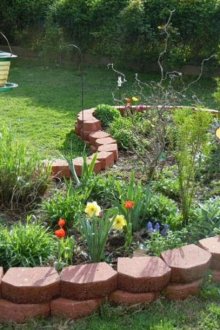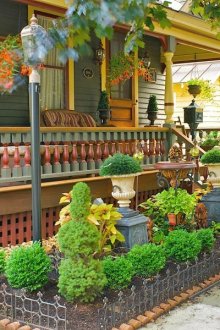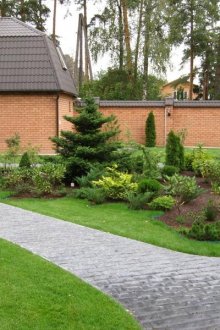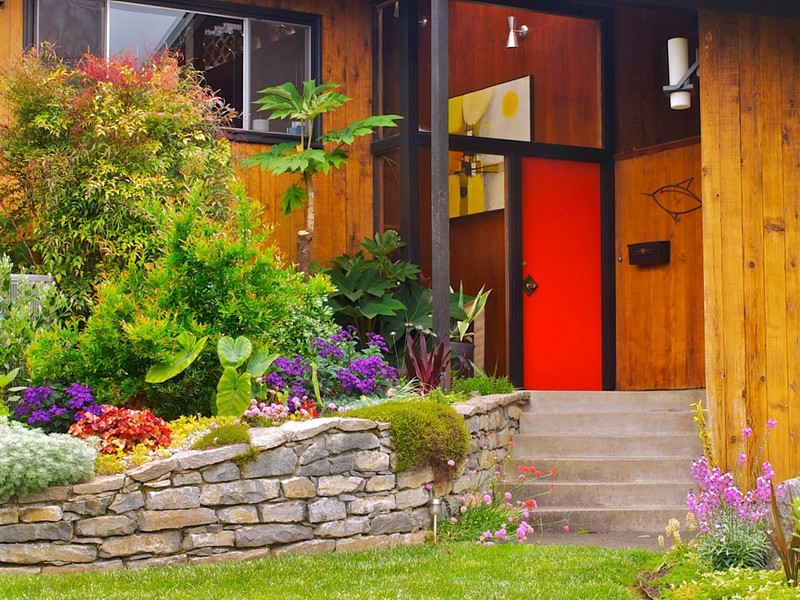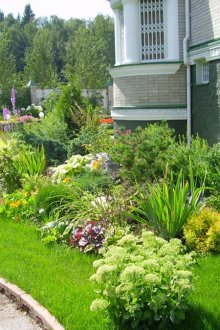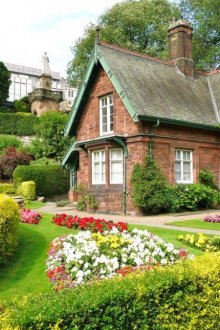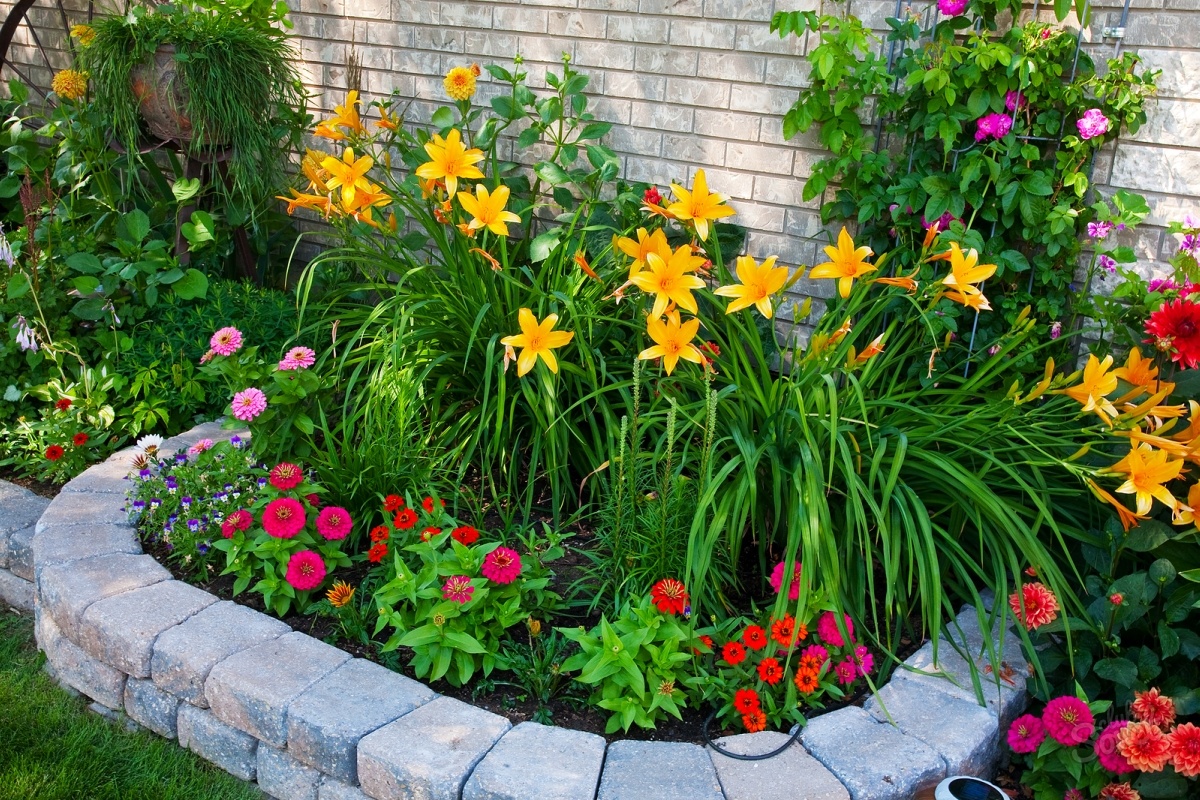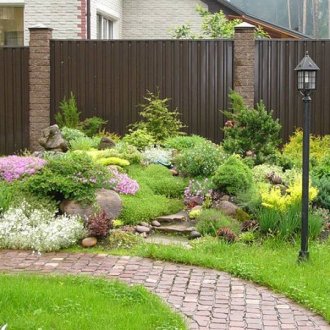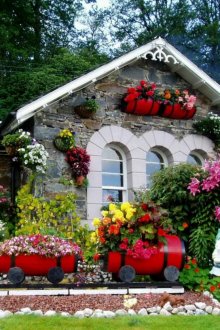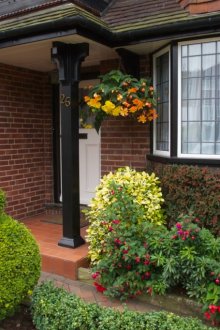Front garden: important features (30 photos)
Content
Each owner of a private house seeks to make his home comfortable and beautiful. This applies both to the building itself and to the surrounding area. And if the patio is hidden from prying eyes, then the front garden, the plot of land near the house, between its facade and the fence - this is actually the “face” of the estate, therefore, special attention is paid to its design.
If you want to equip the front garden with your own hands, so that it becomes the hallmark of your house and attracts everyone's attention, you need to spend a lot of effort and time. However, the result will exceed all expectations. Using imagination and custom solutions, you can make the front garden a real work of landscape art.
When designing a front garden, two options are used: open and closed. The first option provides for the arrangement of plants and other elements of landscape design so that the best view is from the street. With the closed version of the composition of the plants have a "face" to the house. The choice depends on the layout of the plot and the desire of the owners.
Front garden fence
The appearance of the front garden largely depends on its fence, which often performs a decorative function. Today, there are many varieties of fences, among which you can choose the option that harmoniously complements the design of the front garden and the facade of the building that matches the style.
If forged windows are present on the windows of the house, then the openwork fence for the front garden with a similar pattern will make up a single ensemble with them. A huge variety of patterns that can be embodied in metal by masters of art forging, will give your home and land a unique look.
A classic option is a wooden fence fence, and a wicker fence is perfect for creating a rustic front garden. A beautiful fence for the front garden is its frame, which gives the site a holistic and finished look. If you wish, you can make a wooden fence for the front garden with your own hands.
The design of the front garden should be in harmony not only with the fence, but also with the architectural appearance of the house. Not only specialists - landscape designers can make this site equipped, stylish and well-groomed. This task is within the power of anyone who loves gardening and is ready to apply a creative approach. How to make a front garden with your own hands - this will be discussed later.
Front garden design: beauty and harmony
First you need to decide how you want to see your front garden. At this site, you can arrange a flower garden by picking plants in the front garden in such a way as to ensure their continuous flowering from early spring to frost. This can be a familiar flowerbed, or, depending on the characteristics of the site, one of its varieties:
- Rabatka. If your front garden has a rectangular shape and occupies the territory between the fence and the facade of the house, you will turn it into a discount, planting flowers in even rows.
- Rock garden (alpine hill). This is the name of the landscape composition imitating a mountain landscape. To create it, you will need stones and ornamental plants.
- Border.If there is a path from the gate to the porch of the house, then the border with flowers surrounding it is called the border.
- Mixborder This is the most common type of flower garden, which is a complex composition of a variety of flowering and ornamental plants.
Choosing plants for the front garden: basic rules
When selecting ornamental plants, the following factors must be considered:
- Many flowers in the front garden are photophilous, and for lush flowering they need open sunny areas. These include chamomiles, peonies, petunias, asters, lupins, phloxes, gladioli. In the shading, forget-me-nots, hosts and ferns feel great. Depending on which side, sunny or shadowy, your front garden is located, and the assortment of plants will depend.
- Timing of flowering. There are early flowering plants, which include most bulbs: crocuses, hyacinths, daffodils, tulips, as well as lilies of the valley, daisies and primroses. Medium-flowering plants include peonies, irises, daylilies, phlox, bluebells, marigolds, nasturtiums, cosmeas. From late August to almost the frost, late-flowering dahlias, asters and chrysanthemums delight with their flowering. If you want to enjoy continuous flowering for several months, you need to make sure that your front garden has flowers with different flowering periods.
- Plant height. Delphinium, digitalis, gladiolus, lupine, canna are tall plants. Medium-sized include chamomile, poppy, salvia, bell, rudbeckia. Undersized are called scabiosis, purslane, pansies, nasturtium. And sedum, awl-shaped phlox and saxifrage are considered creeping (ground cover). To make your front garden look harmonious, you need to combine flowers of different heights, creating original compositions. In closed gardens, the tallest plants are placed along the fence.
- Plant life span. All plants are divided into annual, biennial and perennial. The life cycle of annual plants lasts only one season. These include petunias, marigolds, cosmeas, asters, snapdragons. In biennial plants, a rosette of leaves forms in the first year of life, and flowering occurs in the second season. As two-year-olds, Turkish carnations, pansies, digitalis, and daisies are grown. Perennial plants can grow in one place for several years, and most of them winter in the ground: chamomile, lupine, daylily, iris, rudbeckia. Perennials such as dahlias, calla lilies and gladioli are dug up after flowering and stored in a cool, dry and dark place in winter, and planted in the ground in spring.
To make your front garden look beautiful and enjoy continuous flowering, you need to correctly select plants according to flowering terms, life expectancy, height and color scheme. When planting perennial plants, one must take into account that they will grow from year to year, so their placement should not be too dense. In the early years, annuals can be planted between them to fill an empty space.
To the delight of the owners of the front gardens, there are a large number of plants that continuously bloom almost all summer. These are perennial phloxes, roses and hydrangeas. Of annuals, salvia, petunias, lavatories, cosmei, morning glory, nasturtiums will delight with lush and prolonged flowering. Harmoniously choosing the colors of the front garden, for several months you will admire the riot of bright colors of nature.
If you decide to equip the front garden for the first time, or do not have the opportunity to devote too much time to caring for plants, pay attention to unpretentious flowering plants. Irises, sedum, peonies, daylilies and poppies are some of the most unpretentious perennials.Annual petunias, morning glory, nasturtiums, marigolds, sweet peas will also not cause much trouble either during planting or care.
Front garden style: which one to choose?
There are many styles of garden design: oriental, classic, rural, etc. How to decorate the garden, which of the styles to choose for its design - depends on the desire of the owners. The main thing is that the beautiful front gardens are in harmony with the rest of the plots and correspond to the general style of the house and other buildings.
For buildings made in a modern style, a laconic, minimalist front garden with straight paths laid with paving slabs and flower beds of geometric shapes is perfect. Plants for such flower beds will need undersized or creeping: awl-shaped phlox, broom, stonecrop, cereal grass.
For the Asian-style front garden, flowering perennials of not too bright colors are used, coniferous dwarf trees and low-growing shrubs: boxwood, juniper, thuja. Be sure to decorate the front garden in the form of an unprocessed, "wild" natural stone.
The front garden in front of a private house in a romantic style welcomes the presence of garden arches with climbing roses, paved with gravel paths and flower beds with bright, lushly flowering plants: asters, peonies, dahlias, petunias, salvia.
Country-style garden-style front garden will be in harmony with city buildings, and with a house in the village, and with a country house. There is a special effect of negligence in this style. Beautiful front gardens in this area are distinguished by a wicker fence and unpretentious perennials that do not require careful maintenance.
Properly choosing decorative and flowering plants, you can beautifully design a front garden and turn this site into a colorful oasis. It will look bright and stylish, attract the admiring glances of others, and will become the highlight of your estate.
